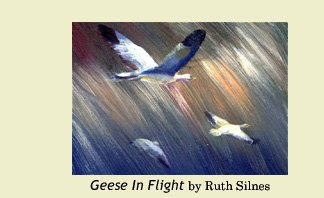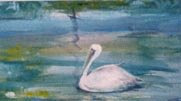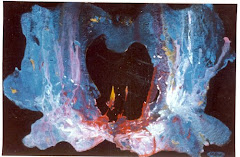Art is a part of all our lives, wherever we go, whatever we see. What we do now tells about the culture of today wherever we happen to be.
For those of you who are experienced in drawing or painting, I hope these classes will add to what you already know.
I will appreciate it if you tell me what your particular interests are.
 The illustration shows you the distances between features of the head.
The illustration shows you the distances between features of the head.-- Think of the head as being shaped like an egg and draw light lines as shown on the illustration.
-- Notice that the ear is between the eyes and the base of the nose.
-- To give the illusion of being three dimensional, instead of making straight lines as in drawing a box, make them oval.
For this exercise draw the head straight on. Normally it looks best if the head is tilted and/or turned.
 After you get the feel for drawing the outline of the head add the facial features.
After you get the feel for drawing the outline of the head add the facial features.You will notice that male heads have sharper lines.

 While the adult head is oval, the child’s head is more round. The forehead is more pronounced than the adult and the jaw bones, neck and other facial features are smaller.
While the adult head is oval, the child’s head is more round. The forehead is more pronounced than the adult and the jaw bones, neck and other facial features are smaller.
Have fun.













2 comments:
This is brilliant and really useful but I'm having trouble with drawing heads tilted directly back as if somebody facing you tilts their head back. Could you help? You're amazing.
I'm glad to have you aboard. Your question is hard to answer in words but I'll give it a try. Your question about a head looking straight forward and bent back: The center line of the face would be straight, however, I recommend the head be slightly turned.
Keep up the good work.
Cheers,
Ruth
Post a Comment